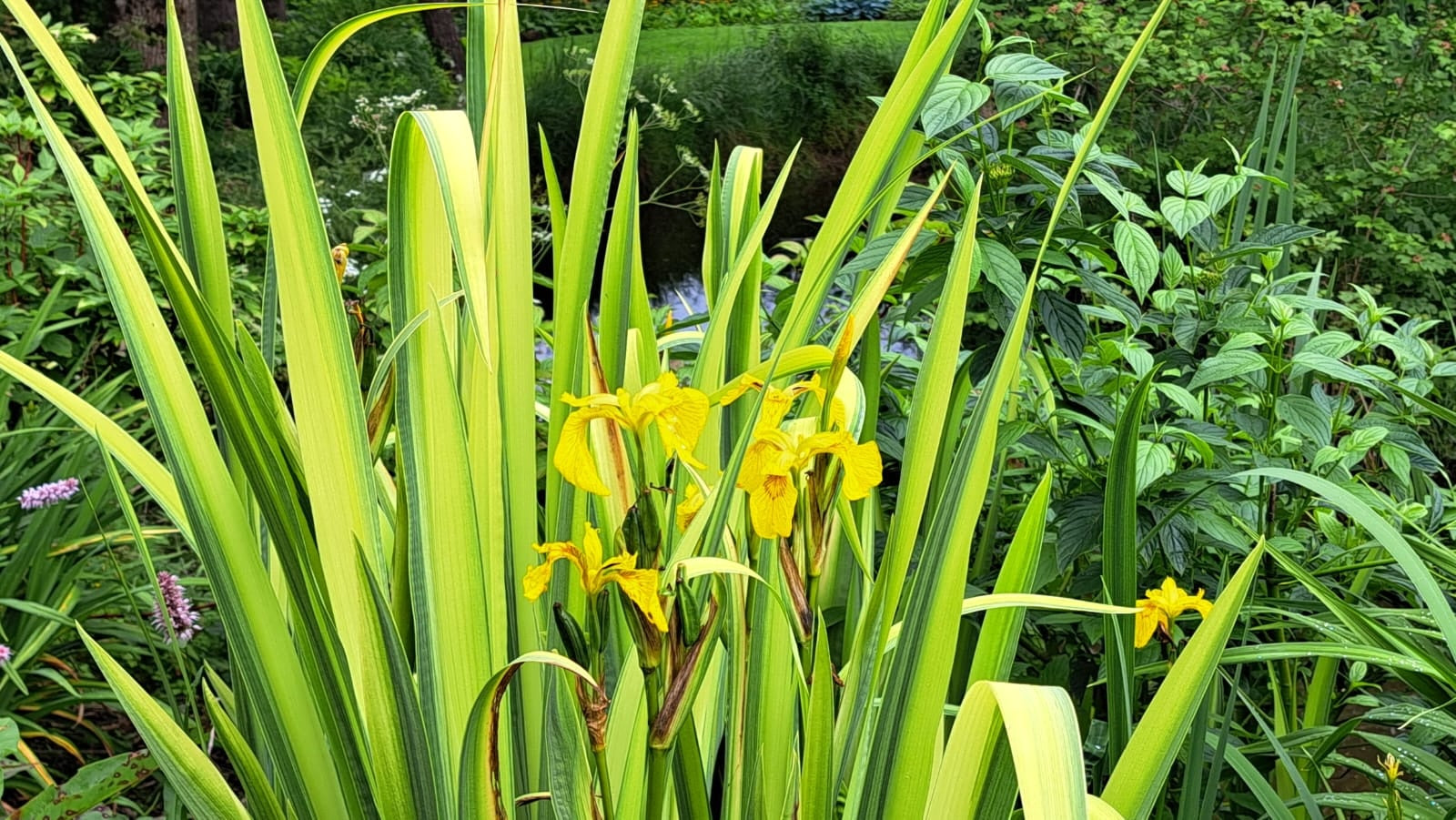Iris pseudacorus 'Variegata' (v)
Approx. 0.5 litre pot
About this cultivar:
Iris pseudacorus 'Variegata' (v), commonly called variagted yellow flag iris, is a rhizomatous beardless wetland iris that is native to Europe, northern Asia, the Middle East and northern Africa. It is at home in wet soils, typically forming large colonies along streams, ponds and marshes where its large yellow flowers give way to dramatic large seed pods. Specific epithet means false Acorus as the rhizomes resemble those of Acorus.
The plant seeds have been used as a coffee substitute and the plant roots have been used in the past for a variety of purposes including medical treatments, dyes, inks, and snuff. Versatile!
In the garden use it in wet areas (even in shallows streams!) where it will grow along happily but note the leaf variegation tends to fade when it gets hot. Unsurprisingly it was awarded the Royal Horticultural Society Award of Garden Merit (RHS AGM) in 1994.
- Position: Full sun, partial shade
- Soil: Almost any soil, bogs, streams, grows well in Ballyrobert
- Flowers: May, June
- Other features: Cut Flowers or Dried Flowers, waterlogged
- Hardiness: H7 - Hardy in the severest European continental climates (< -20°C), Fully hardy - grows well in Ballyrobert
- Habit: Clump forming
- Foliage: Deciduous
- Height: 105 - 150 cm (3.5 - 5 ft)
- Spread: 45 - 60 cm (1.5 - 2 ft)
- Time to full growth: 2 to 5 years
- Plant type: Herbaceous Perennial, bog, aquatic
- Colour: Green, yellow
- Goes well with: Hosta, Hemerocallis, Geranium
About this genus:
Iris (i-ris) is a genus of 260–300 species of flowering plants with showy flowers. It takes its name from the Greek word for rainbow, referring to the wide variety of flower colours found among the many species. As well as being the scientific name, Iris is also used as a common name. Long in cultivation there seem to be as many cultivars as plants. Culturally the genus has had quite an impact. The fleur-de-lis, a stylized Iris, first occurs in its modern use as the emblem of the House of Capet (rulers of France 987 to 1328). It is also the universal symbol for Scouting. Many artists have a 'thing' with Iris, not least Van Gogh- who was a fan of Iris (not just sunflowers).... see images opposite!
As a group, Iris species can range from drought-tolerant dry land perennials to bog dwellers and from sun to shade, so there is no set of cultivation rules for the genus as a whole. In general though the cultivars we have in our garden (and sell), are tough, low maintenance plants perfect for wet gardens and similar sites.
Try pairing irises in the garden with Hosta, Hemerocallis, Geranium. They also look great as a cut-flower; the reason you don't get them in florists is that they don't transport well.


